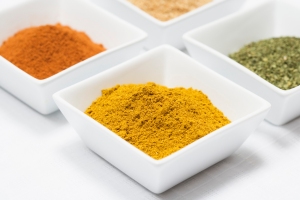 For many people, eating too much sodium can lead to high blood pressure, which can cause stroke and heart disease. Foods that are high in sodium include cheese, deli meats, hot dogs, canned soup, prepared foods, and condiments like ketchup. Check the label on packaged foods and choose ones that are “low sodium” or “no salt added” to reduce your sodium. Try eating more fresh foods, too, like fresh meats, fruits, and vegetables. Cooking food at home is another great way to lower sodium because it allows you to control how much salt is in your food. Instead of salt, try herbs, spices, garlic, vinegar, lemon juice, or no-salt seasoning mixes. Cutting back on salt little-by-little will allow your body to adjust to the natural flavors of foods, so you won’t need to use so much salt. Eat healthy and enjoy your food with less salt!
For many people, eating too much sodium can lead to high blood pressure, which can cause stroke and heart disease. Foods that are high in sodium include cheese, deli meats, hot dogs, canned soup, prepared foods, and condiments like ketchup. Check the label on packaged foods and choose ones that are “low sodium” or “no salt added” to reduce your sodium. Try eating more fresh foods, too, like fresh meats, fruits, and vegetables. Cooking food at home is another great way to lower sodium because it allows you to control how much salt is in your food. Instead of salt, try herbs, spices, garlic, vinegar, lemon juice, or no-salt seasoning mixes. Cutting back on salt little-by-little will allow your body to adjust to the natural flavors of foods, so you won’t need to use so much salt. Eat healthy and enjoy your food with less salt!
Category Archives: Cooking
Making sandwiches
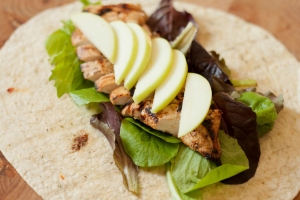 Sandwiches make a quick, easy, and convenient meal. Here are some tips for inexpensive and healthy sandwich choices. Instead of deli meats, which are high in sodium and can be expensive, use fresh meat that you’ve cooked yourself. For example, try using leftover roast pork, sliced meatloaf, or grilled chicken on a sandwich. Salads like egg, tuna, or chicken are low-cost and easy to make, especially for a group. You can vary these salads by using different seasonings such as curry powder or chili powder. Adding fruits and vegetables is another way to vary your sandwiches, and make them even healthier. Try putting chopped red and green bell pepper in egg salad or apple slices on a roast pork sandwich. Follow these tips and enjoy healthier sandwiches today!
Sandwiches make a quick, easy, and convenient meal. Here are some tips for inexpensive and healthy sandwich choices. Instead of deli meats, which are high in sodium and can be expensive, use fresh meat that you’ve cooked yourself. For example, try using leftover roast pork, sliced meatloaf, or grilled chicken on a sandwich. Salads like egg, tuna, or chicken are low-cost and easy to make, especially for a group. You can vary these salads by using different seasonings such as curry powder or chili powder. Adding fruits and vegetables is another way to vary your sandwiches, and make them even healthier. Try putting chopped red and green bell pepper in egg salad or apple slices on a roast pork sandwich. Follow these tips and enjoy healthier sandwiches today!
Organizing your refrigerator and pantry to save money
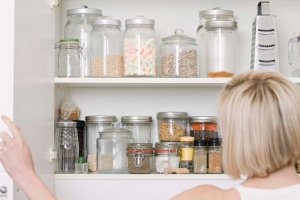 Throwing away food is like throwing away money. Keeping an organized refrigerator and pantry will help you know what foods you have so that you can eat them before they spoil. Knowing what you have on hand will save you money because you won’t accidentally buy food that you don’t need. An organized kitchen saves you time and makes cooking easier because you will be able to quickly find what you need. To organize your refrigerator or pantry, start by taking everything out (use a cooler for perishable items like milk). Check the expiration dates, throw out what has expired, and plan meals around food that needs to be used up soon. Arrange similar foods together so you know where to find them. Save money and time with an organized refrigerator and pantry!
Throwing away food is like throwing away money. Keeping an organized refrigerator and pantry will help you know what foods you have so that you can eat them before they spoil. Knowing what you have on hand will save you money because you won’t accidentally buy food that you don’t need. An organized kitchen saves you time and makes cooking easier because you will be able to quickly find what you need. To organize your refrigerator or pantry, start by taking everything out (use a cooler for perishable items like milk). Check the expiration dates, throw out what has expired, and plan meals around food that needs to be used up soon. Arrange similar foods together so you know where to find them. Save money and time with an organized refrigerator and pantry!
Grilling
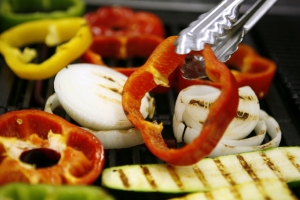 Grilling is great because: you don’t have to heat up the kitchen, cleanup is easy, and it adds a distinct flavor to your food. It’s also a healthy way to cook meat because some of the fat drips away. If the meat gets a little charred or burnt, just cut that section off before eating. And grilling is not just for meat; vegetables and fruits are great on the grill. Good grilling vegetables include potato, summer squash, eggplant, asparagus, mushrooms, and tomatoes. For fruit, try nectarines, peaches, pears, and pineapple. Cut fruits and vegetables into thick, flat, even slices or cut smaller fruits and vegetables in half. Brush with a little oil to prevent sticking, and be sure to use separate utensils if you’re also grilling meat at the same time. Save time and eat healthy by grilling!
Grilling is great because: you don’t have to heat up the kitchen, cleanup is easy, and it adds a distinct flavor to your food. It’s also a healthy way to cook meat because some of the fat drips away. If the meat gets a little charred or burnt, just cut that section off before eating. And grilling is not just for meat; vegetables and fruits are great on the grill. Good grilling vegetables include potato, summer squash, eggplant, asparagus, mushrooms, and tomatoes. For fruit, try nectarines, peaches, pears, and pineapple. Cut fruits and vegetables into thick, flat, even slices or cut smaller fruits and vegetables in half. Brush with a little oil to prevent sticking, and be sure to use separate utensils if you’re also grilling meat at the same time. Save time and eat healthy by grilling!
Packing your own lunch
 When you buy lunch, you pay not only for the food but also for the convenience and the effort to make the food. You can save money and eat healthier by packing your own lunch. First, figure out what options you have for carrying, storing, and reheating your lunch. Do you have a lunchbox? Is there a fridge and a microwave or toaster oven where you work? The answers to these questions will help you decide what kind of food you can pack. Try being creative with what you bring. For example, if you have a microwave or toaster oven then you can make a baked potato. If you want hot food but don’t have a microwave or toaster oven, you could bring it already heated in a thermos. Or you might buy part of your lunch and bring the rest. Save money, eat better, and add variety to your lunch by packing your own!
When you buy lunch, you pay not only for the food but also for the convenience and the effort to make the food. You can save money and eat healthier by packing your own lunch. First, figure out what options you have for carrying, storing, and reheating your lunch. Do you have a lunchbox? Is there a fridge and a microwave or toaster oven where you work? The answers to these questions will help you decide what kind of food you can pack. Try being creative with what you bring. For example, if you have a microwave or toaster oven then you can make a baked potato. If you want hot food but don’t have a microwave or toaster oven, you could bring it already heated in a thermos. Or you might buy part of your lunch and bring the rest. Save money, eat better, and add variety to your lunch by packing your own!
Being creative in the kitchen
 When you buy prepared or packaged foods, you are paying for the preparation as well as the ingredients in the food. You are also paying for any additives or special packaging to help the food stay fresh on the shelf. Cooking at home is a great way save money because you don’t pay for these extra costs. To get started, look online for recipes or at your library for cookbooks. Yard sales are also a good place to find cookbooks as well as cookware. Friends are often a great resource for recipes, too. If you taste something that you like at a friend’s place, ask about the recipe. What seasonings did they use? Was it easy to make? Where did they find the recipe? Copy the recipe so you can go home and try it out. You may discover a hidden chef inside yourself!
When you buy prepared or packaged foods, you are paying for the preparation as well as the ingredients in the food. You are also paying for any additives or special packaging to help the food stay fresh on the shelf. Cooking at home is a great way save money because you don’t pay for these extra costs. To get started, look online for recipes or at your library for cookbooks. Yard sales are also a good place to find cookbooks as well as cookware. Friends are often a great resource for recipes, too. If you taste something that you like at a friend’s place, ask about the recipe. What seasonings did they use? Was it easy to make? Where did they find the recipe? Copy the recipe so you can go home and try it out. You may discover a hidden chef inside yourself!
Saving with soup
 Soup is an easy, low-cost, and nutritious way to warm up during the winter months. Save time by cooking a big batch and freezing some for a quick meal later on. To make soup, start by sautéing flavorful vegetables, like onion, garlic, celery, and carrots, in a pot, then add your seasonings. Start with black pepper, a dried bay leaf, and any herbs or spices you like. Stir in water or stock, then add your main ingredients in the order of cooking time, starting with the longest. For example, start with dried beans and end with spinach. Add leftovers last since they are already cooked. You can use any combination of vegetables, beans, grains, pasta, and meat. Try cooking soup for a low-cost meal that’s sure to warm you up this winter!
Soup is an easy, low-cost, and nutritious way to warm up during the winter months. Save time by cooking a big batch and freezing some for a quick meal later on. To make soup, start by sautéing flavorful vegetables, like onion, garlic, celery, and carrots, in a pot, then add your seasonings. Start with black pepper, a dried bay leaf, and any herbs or spices you like. Stir in water or stock, then add your main ingredients in the order of cooking time, starting with the longest. For example, start with dried beans and end with spinach. Add leftovers last since they are already cooked. You can use any combination of vegetables, beans, grains, pasta, and meat. Try cooking soup for a low-cost meal that’s sure to warm you up this winter!
Planning your meals
 The first step to saving grocery money is planning your meals! Check what you have on hand and what’s on sale at the store. Then plan your meals to use those foods. Planning meals saves you money in four ways: First, you’ll be able to use what you already have. Second, you’ll be able to use more items that are on sale. Third, you’ll have everything you need when you prepare your meals, so you’ll save extra trips to the store. And fourth, you can plan ways to use leftovers, so you’ll have less waste. Choose a regular time each week to plan your meals. It’s the best way to know what you’ll really need at the store.
The first step to saving grocery money is planning your meals! Check what you have on hand and what’s on sale at the store. Then plan your meals to use those foods. Planning meals saves you money in four ways: First, you’ll be able to use what you already have. Second, you’ll be able to use more items that are on sale. Third, you’ll have everything you need when you prepare your meals, so you’ll save extra trips to the store. And fourth, you can plan ways to use leftovers, so you’ll have less waste. Choose a regular time each week to plan your meals. It’s the best way to know what you’ll really need at the store.
Eating healthier with herbs
 Did you know that pound for pound, parsley has more than 10 times the vitamin A, 8 times the iron, and more calcium and vitamin C than raw broccoli? It even beats raw spinach for most of these same nutrients. Many fresh, dried, or ground herbs and spices can add vitamins and minerals to your diet and help you eat less sodium. Use more herbs and spices instead of salt – not just for great flavor, but for good nutrition, too! Try one new herb every few months, or plant some in a little window pot!
Did you know that pound for pound, parsley has more than 10 times the vitamin A, 8 times the iron, and more calcium and vitamin C than raw broccoli? It even beats raw spinach for most of these same nutrients. Many fresh, dried, or ground herbs and spices can add vitamins and minerals to your diet and help you eat less sodium. Use more herbs and spices instead of salt – not just for great flavor, but for good nutrition, too! Try one new herb every few months, or plant some in a little window pot!
Feeding the freezer
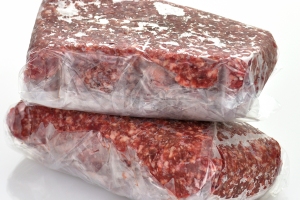 What is “feeding the freezer?” It’s just making extra of whatever you are cooking and freezing it for later. For example, if broccoli or chicken are on sale this week, buy a little extra, cook it, and freeze what you don’t eat. You can even freeze fruit when it’s in season and use it in smoothies or other fruit dishes. Store your leftovers in single-serving freezer bags or containers, and date them so you know how long they’ve been frozen. Then when you are in a hurry and don’t want to spend money to eat out, just grab what you want and reheat it. Or throw several items together for a delicious winter stew. It’s great, healthy “fast food” right in your own kitchen!
What is “feeding the freezer?” It’s just making extra of whatever you are cooking and freezing it for later. For example, if broccoli or chicken are on sale this week, buy a little extra, cook it, and freeze what you don’t eat. You can even freeze fruit when it’s in season and use it in smoothies or other fruit dishes. Store your leftovers in single-serving freezer bags or containers, and date them so you know how long they’ve been frozen. Then when you are in a hurry and don’t want to spend money to eat out, just grab what you want and reheat it. Or throw several items together for a delicious winter stew. It’s great, healthy “fast food” right in your own kitchen!